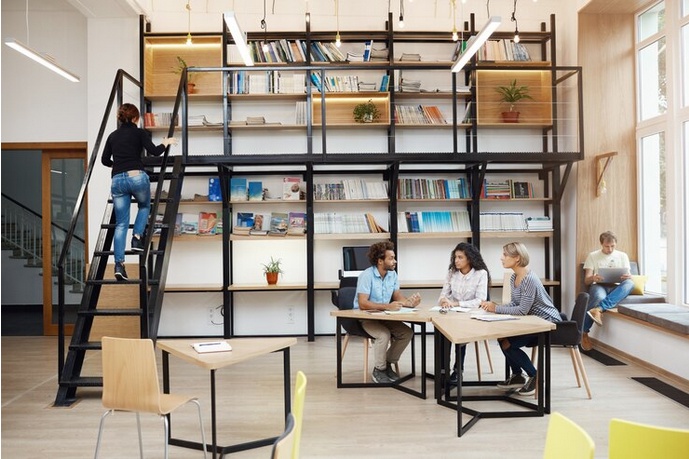Introduction
The modern workplace is undergoing a transformation, driven by dynamic shifts in work culture, technological advancements, and the need for efficient space utilization. Among the architectural innovations reshaping office spaces, the incorporation of mezzanine floors stands out as a strategic solution. This article explores the impact of office mezzanine floors in redefining workspaces, addressing their role in optimizing space, fostering collaboration, and adapting to the evolving needs of the contemporary workforce.
Optimizing Space for Enhanced Efficiency
One of the key challenges in contemporary office design is maximizing the utility of limited space. Mezzanine floors present a strategic solution by capitalizing on vertical space. In bustling urban areas where square footage is at a premium, the ability to optimize space vertically becomes imperative. Office mezzanine floors offer an opportunity to expand work areas without the need for extensive horizontal expansion, contributing to a more efficient use of valuable real estate.
Fostering Collaboration and Connectivity
Mezzanine floors play a crucial role in fostering collaboration and connectivity within the workplace. The strategic placement of these intermediate levels creates additional zones for teamwork, meetings, and creative interactions. By providing dedicated spaces for collaboration, office mezzanine floors contribute to breaking down silos and promoting a more open and communicative work environment. This strategic approach aligns with the evolving nature of work, where seamless collaboration is essential for innovation and productivity.
Adaptability to Evolving Work Styles
The nature of work is evolving rapidly, with an increasing emphasis on flexibility and adaptability. Office mezzanine floors offer a strategic solution to accommodate these changing work styles. The flexibility they provide allows for the creation of diverse workspaces within the same office environment. From quiet work pods to collaborative hubs, mezzanine floors can be tailored to meet the specific needs of different teams and departments. This adaptability ensures that the workspace remains dynamic and responsive to the evolving demands of the workforce.
Efficient Use of Vertical Space for Amenities
Beyond traditional office spaces, mezzanine floors are strategically utilized to house amenities that contribute to employee well-being. Cafeterias, lounges, and recreational areas can be seamlessly integrated into these intermediate levels. This strategic allocation of vertical space for employee amenities enhances the overall workplace experience. By providing dedicated spaces for relaxation and socialization, office mezzanine floors contribute to a more balanced and conducive work environment.
Enhanced Aesthetics for a Positive Work Environment
The visual appeal of a workspace plays a significant role in shaping the employee experience. Mezzanine floors, with their architectural versatility, offer a strategic avenue for enhancing the aesthetics of office interiors. The design possibilities are vast, ranging from contemporary glass railings to innovative lighting solutions. The strategic integration of aesthetically pleasing elements in mezzanine floor design contributes to a positive and inspiring work environment, fostering creativity and employee satisfaction.
Improved Spatial Organization and Efficiency
Mezzanine floors contribute to improved spatial organization within office spaces. By strategically dividing the available space into different levels, businesses can enhance workflow efficiency. For example, administrative functions may be situated on one level, while creative teams occupy another. This strategic organization minimizes distractions, optimizes the use of space, and creates a more streamlined work environment. The result is improved operational efficiency and a more focused workforce.
Strategic Alignment with Sustainability Goals
As corporate responsibility and sustainability gain prominence, office mezzanine floors align with these strategic objectives. The efficient use of vertical space minimizes the need for extensive horizontal expansion, reducing the environmental impact associated with construction. Additionally, the design and construction of mezzanine floors can incorporate eco-friendly materials and energy-efficient features, contributing to a greener and more sustainable workplace.
Conclusion
In conclusion, the strategic impact of office mezzanine floor in redefining workspaces is evident across various facets of modern office design. From optimizing space to fostering collaboration, adapting to evolving work styles, and enhancing aesthetics, these intermediate levels play a pivotal role in creating dynamic and efficient workplaces. The adaptability of mezzanine floors to house amenities and their alignment with sustainability goals further underscore their significance in contemporary office architecture. As the nature of work continues to evolve, the strategic incorporation of mezzanine floors will likely remain a key consideration for businesses aiming to create flexible, collaborative, and aesthetically pleasing work environments.


No comments yet